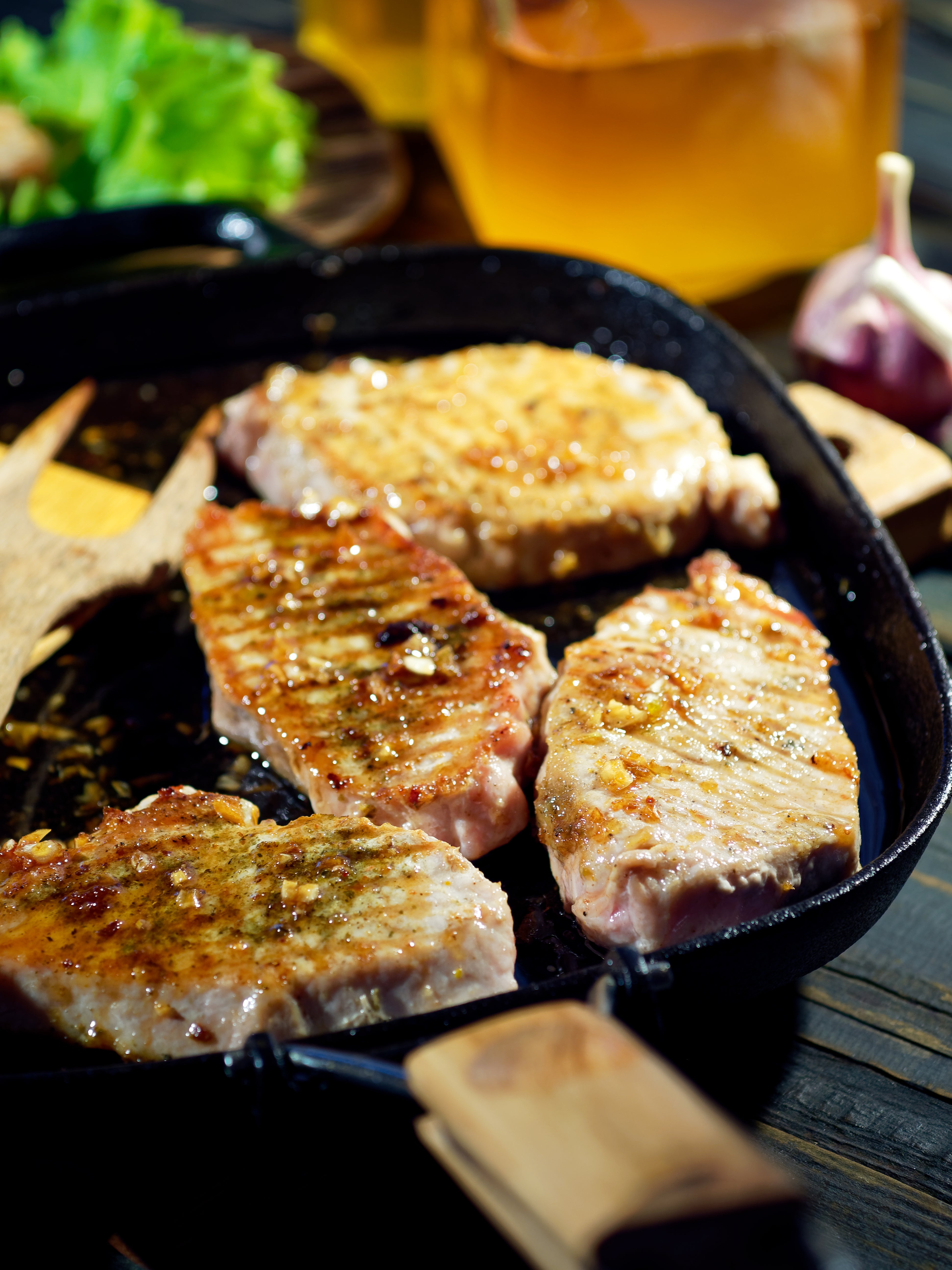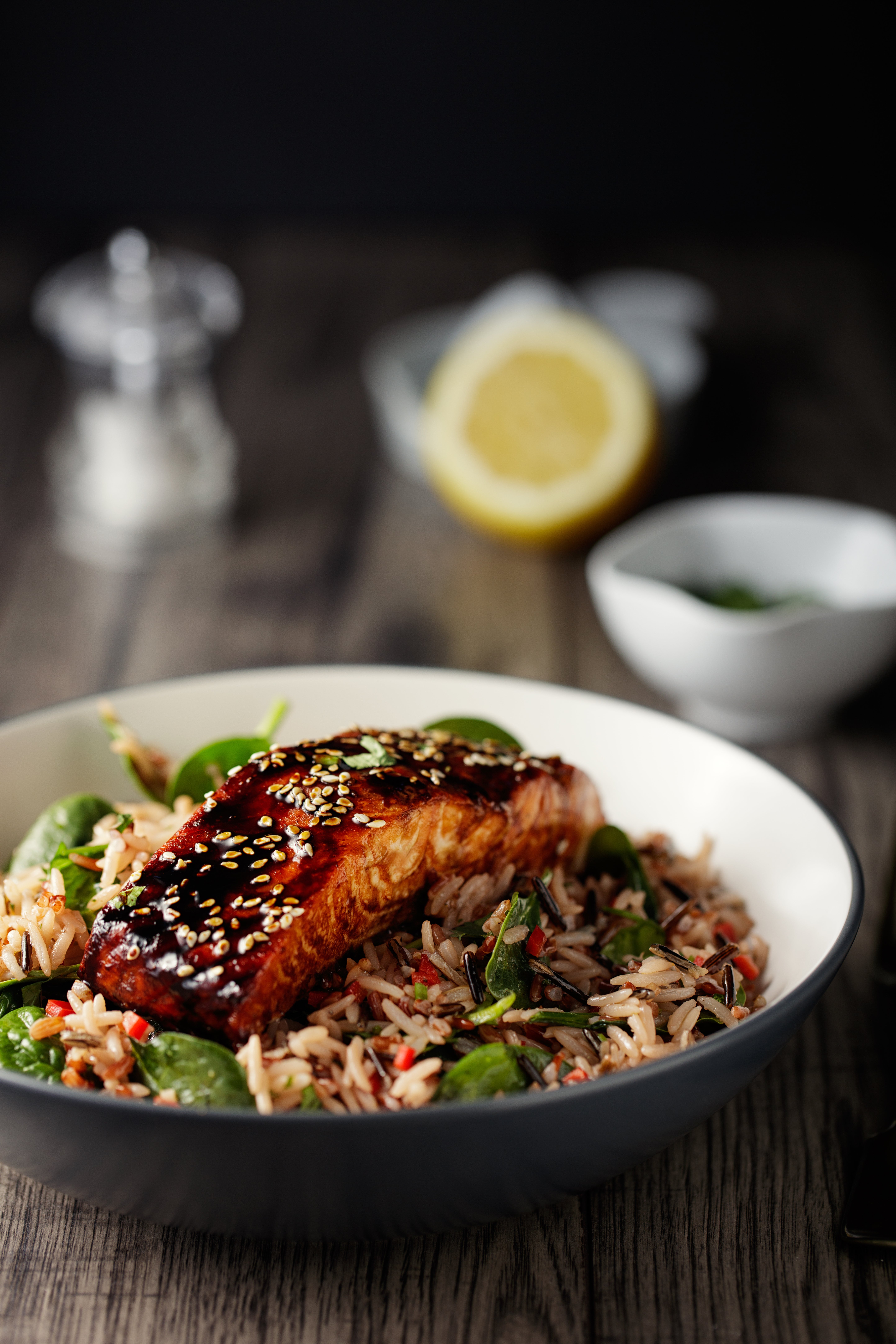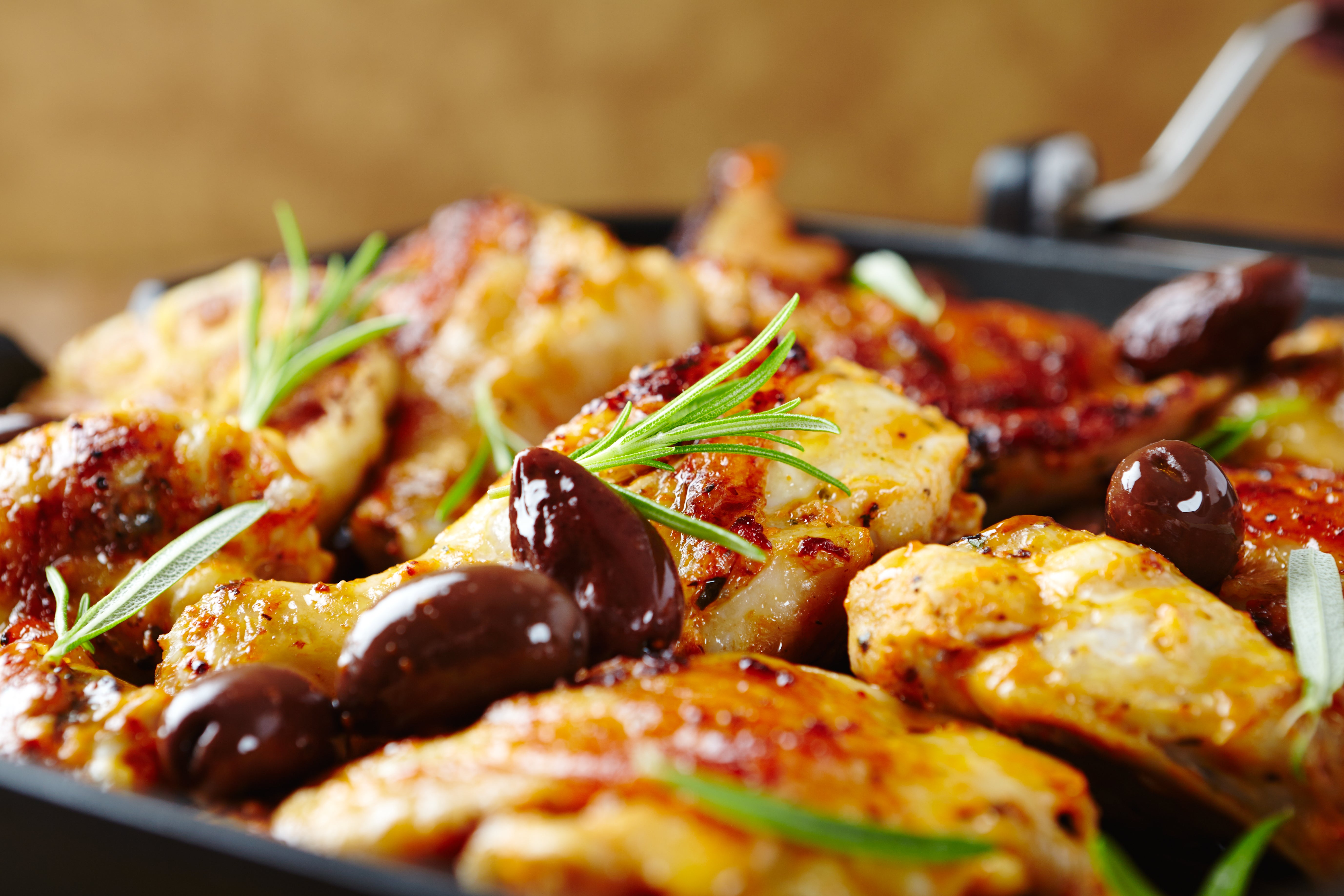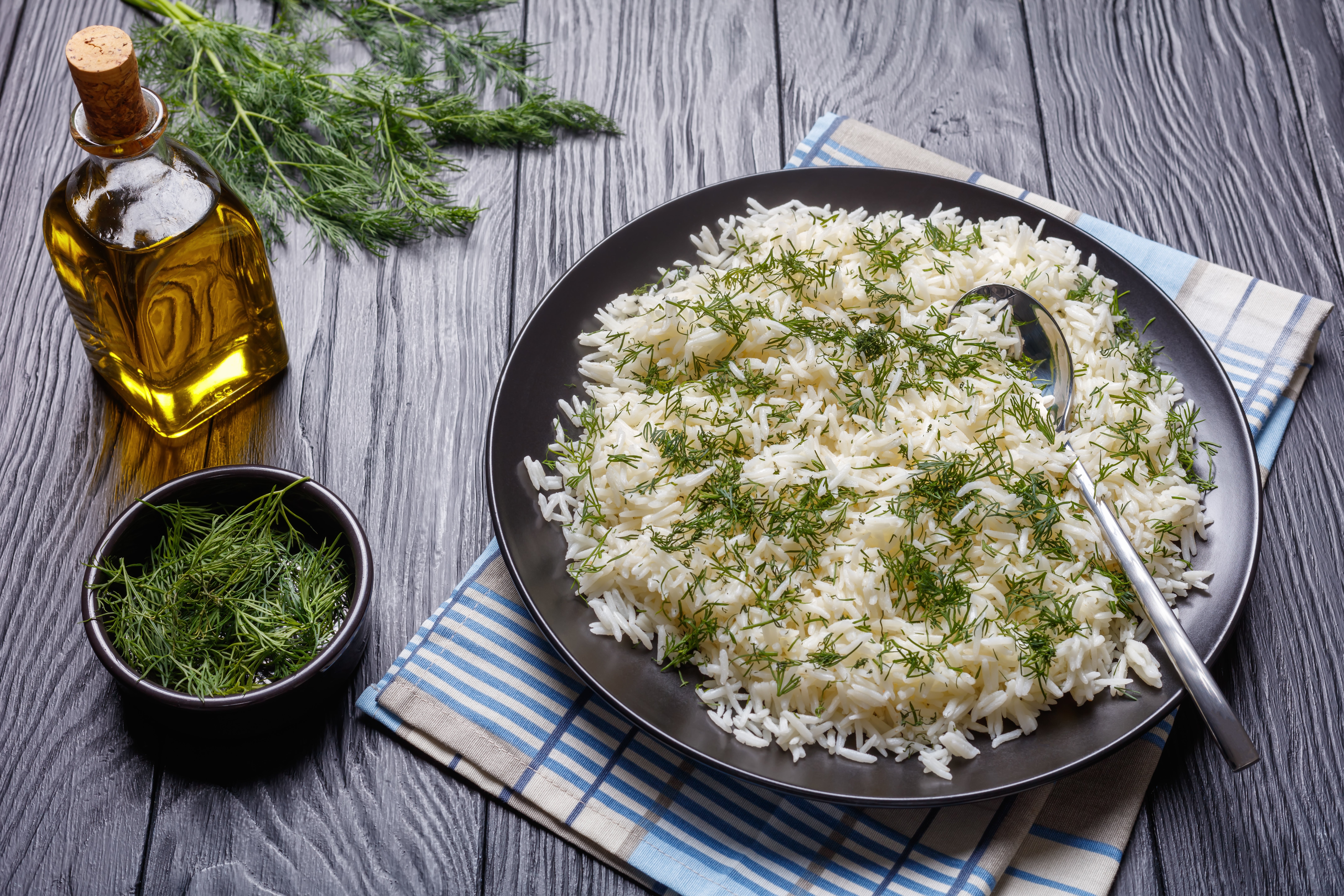
Easy is the name of the game this week, as it’s still not quite feeling like spring – though we’re close – and Covid is still hanging on. But a few recipes are keeping me going and bringing some energy to my routine: Ali Slagle’s pork chops, coated in a sauce of mustard and jam, and Eric Kim’s gochugaru salmon, glazed with a mixture of red pepper, maple syrup, butter and rice vinegar. Also Naz Deravian’s sheveed polo – dill rice, from Iran – is a perfect teaser for spring, a gorgeously green moment that will resonate with dill lovers (me!).
Pork chops with jammy-mustard glaze

By: Ali Slagle
Fruit and mustard are two classic accompaniments to pork, and really, a juicy chop doesn’t need much more than that for a sweet and tangy sauce. Mix together water, grainy mustard and any fruit preserve that’s good with pork like cherry, fig, peach or apricot. Sear bone-in pork chops mostly on one side to prevent overcooking, then pour the fruit-mustard mixture into the pan while they rest. The pork will stay moist, and its juices will have time to mingle with the sauce. Then just slice the pork and drape it in the velvety two-ingredient glaze. Eat with mashed or roasted potatoes and a green salad.
Serves: 4
Total time: 20 minutes
Ingredients:
2 tbsp cherry, fig, peach or apricot preserves, plus more if needed
2 tbsp wholegrain mustard, plus more if needed
4 (1.5-2cm-thick) pork rib chops (680-900g)
Salt and black pepper
2 tbsp neutral oil (such as canola or grapeseed)
Method:
1. In a small bowl, stir together 60ml water, the preserves and the mustard. Set near the stove. Pat the pork chops dry, and season all over with salt and pepper.
2. In a large (30cm) cast-iron frying pan, heat the oil over medium-high. Add the pork chops and cook, occasionally pressing down to make good contact with the pan, until browned, 4 to 5 minutes. Reduce the heat to low, flip the chops and cook until opaque on the other side, 1 to 2 minutes. Pour in the jam-mustard mixture, turn off the heat, and let rest for 5 minutes.
3. Transfer the chops to plates, then return the pan to medium-low heat and simmer, scraping up browned bits, until the sauce has thickened slightly, 1 to 3 minutes. Taste and adjust seasonings. Every jam is different, so if it’s too sweet, add more mustard, salt or black pepper; if it’s too salty, add a little more jam; if it’s too intense or thick, add a little more water; if it’s flat, add salt. Spoon sauce over the pork chops.
Gochugaru salmon with crispy rice

By: Eric Kim
Gochugaru, a mild, fragrant red-pepper powder, bedazzles this quick salmon dinner. As a key ingredient in Korean home cooking, gochugaru proves that some chillies provide not only heat but fruity sweetness as well. Here, that’s especially true once it’s bloomed in maple syrup, vinegar and butter. If you like shiny things, you may find great pleasure in watching this pan sauce transform into a mirrored, crimson glaze. Try to get long centre-cut salmon fillets for uniform thickness and even cooking. Their crispy skin tastes wonderful with white rice, which toasts in the rendered salmon fat. To balance the richness of the fish, serve it with fresh, crunchy things, like cucumbers or pickles, or a big green salad.
Serves: 4
Total time: 20 minutes
Ingredients:
4 skin-on salmon fillets (170g each)
Salt and black pepper
1 tbsp olive oil
700g cooked white rice, preferably leftovers
4 tsp gochugaru (see tip)
2 tbsp maple syrup
2 tbsp rice vinegar
2 tbsp cold unsalted butter, kept whole
Sliced cucumbers or pickles, for serving (optional)
Method:
1. Season the salmon on all sides with salt and pepper. Heat a large cast iron or nonstick frying pan over medium-high heat. Add the olive oil and sear the salmon fillets skin side down until the skin is browned and crispy, 2 to 5 minutes. The salmon’s orange flesh will begin to turn pale coral as the heat slowly creeps up the sides of the fish; you want that coral colour to come up about two-thirds of the way at this point for a nice medium-rare. Carefully flip the salmon and cook the second side until the flesh feels firm, another 1 to 2 minutes. When you press it, it should not feel wobbly. Transfer the salmon to a plate skin side down and keep the pan with the rendered fat over the heat.
2. Add the rice to the fat in the pan and spread in an even layer, packing it down as if making a rice pancake. Reduce the heat to medium and cook until the bottom is lightly browned and toasted, about 5 minutes. You should hear it crackle. Flip the rice like a pancake, using a spatula if needed. You may not be able to flip it all in one piece, but that’s OK. Cook until lightly toasted on the second side, another 1 to 2 minutes. Go longer if you want crispier rice, but the trifecta of crispy-chewy-soft tastes wonderful.
3. While the rice is cooking, stir together the gochugaru, maple syrup, rice vinegar and 1 teaspoon salt in a small bowl. When the rice is done, divide it evenly among the plates. In the now-empty pan, add the gochugaru mixture and cook, stirring constantly, over medium-high heat until it bubbles up and reduces significantly, 15 seconds to 1 minute. It should look pretty sticky. Turn off the heat and add the cold butter, stirring with a wooden spoon or tongs until fully melted and incorporated into the gochugaru mixture. Pour this glaze over the salmon and serve with cucumbers or pickles if you’d like.
Tip: You can find gochugaru, or red-pepper powder, at Korean or Asian supermarkets and at most grocery stores, as well as online. It sometimes comes in larger bags, which is not a problem because it freezes beautifully and tastes great dusted over just about anything.
Braised Ligurian chicken

Recipe from: Jamie Oliver
Adapted by: Amanda Hesser
This dish comes from a 2003 article about Jamie Oliver: “What I found quite interesting with this dish, being English,” Oliver said, “is that when you eat this, it’s quite delicately flavoured. It’s perfumed with the wine and the rosemary. You get this kind of meaty kind of saltiness from the olives, and what's really interesting is if an English housewife got hold of the recipe, she’d probably stone the olives and have quite a lot of them. But in Italy, literally for eight people they put that much and they leave the pits in.” In his hand, he cradled about two dozen olives.
Oliver continued: “When you cook olives whole like this, it's almost like an anchovy. The salt comes out of the olives, and the olive becomes more like a vegetable. And the salt from the olive flavours the chicken really wonderfully.” This is an adaptation of his recipe.
Serves: 4
Total time: 40 minutes
Ingredients:
2 heaping tbsp flour
Sea salt and freshly ground black pepper
1 1.8kg chicken, cut into 8 pieces
¼ cup (60ml) extra-virgin olive oil
4 to 5 fresh rosemary sprigs
6 cloves garlic, peeled and thinly sliced
350ml white wine
4 anchovy fillets (optional)
90g kalamata olives (with pits)
3 ripe plum tomatoes, halved, seeded and coarsely chopped
Method:
1. In a large bowl, combine flour with salt and pepper to taste. Add chicken pieces and toss until evenly coated.
2. Place a large flameproof casserole dish over medium-high heat, and heat olive oil. Add chicken pieces, and fry until golden underneath, about 5 minutes (fry in batches if your pan isn't large enough to accommodate all of the chicken without crowding). Turn chicken, and add rosemary and garlic. Continue to fry until garlic is softened but not coloured, about 3 minutes. Add wine. When it comes to a boil, add anchovies, olives and tomatoes.
3. Partly cover pan, and reduce heat to medium low. Simmer until chicken is cooked and tender, and broth is reduced to a rich sauce, 15 to 20 minutes. To serve, discard rosemary sprigs, and season well with salt and pepper to taste. Place a piece or two of chicken on each plate, and top with a spoonful of sauce.
Sheveed polo (dill rice)

By: Naz Deravian
This dish is a simple way to make use of a whole bunch of dill and transform an ordinary pot of plain rice. Naz Deravian, author of Bottom of the Pot: Persian Recipes and Stories (Flatiron Books, 2018), uses a mix of fresh and dried dill here. The dried dill enhances the fragrance and also draws out the humidity from the fresh dill so the rice doesn’t turn mushy when steaming. This recipe uses a traditional Persian technique for cooking rice in which you boil the rice for several minutes over high heat, wrap the lid in a kitchen towel to catch the condensation, then steam the rice over low heat for several minutes more. Don't worry; it won’t be overcooked. It will be fluffy perfection. Serve it with chicken or seafood, like roasted dill salmon.
Yield: 6 servings
Total time: 45 minutes
Ingredients:
1 large bunch dill, trimmed and finely chopped
3 tbsp dried dill
350g white basmati rice, rinsed
2 tbsp unsalted butter or olive oil
2 tsp salt
Method:
1. Set aside half of the chopped fresh dill. In a bowl, combine the rest of the fresh dill with the dried dill.
2. Place the rice, butter and salt in a medium pot. Add 830ml water and bring to a boil over high heat. Give it a stir, reduce the heat to low, cover and cook until the water has been absorbed, about 12 minutes (it’s OK to lift the lid to check).
3. Fold the dill mixture into the rice. Wrap the lid in a kitchen towel to catch the condensation, ensuring that the kitchen towel is secured up top so it doesn’t catch fire. Firmly place the lid back on the pot.
4. Cook until the rice is cooked through and fluffy, about 15 minutes more. Gently fluff with a spoon, then transfer to a serving platter, scattering the reserved fresh dill in between spoonfuls of rice.
Tip: The dill can be washed and chopped up to 1 day in advance, and stored in a container lined and covered on top with a paper towel to absorb any moisture. Leftovers can be stored in the fridge (up to 3 days) or in the freezer (up to 3 months). Add a little water when reheating to bring the rice back to life.
© The New York Times







